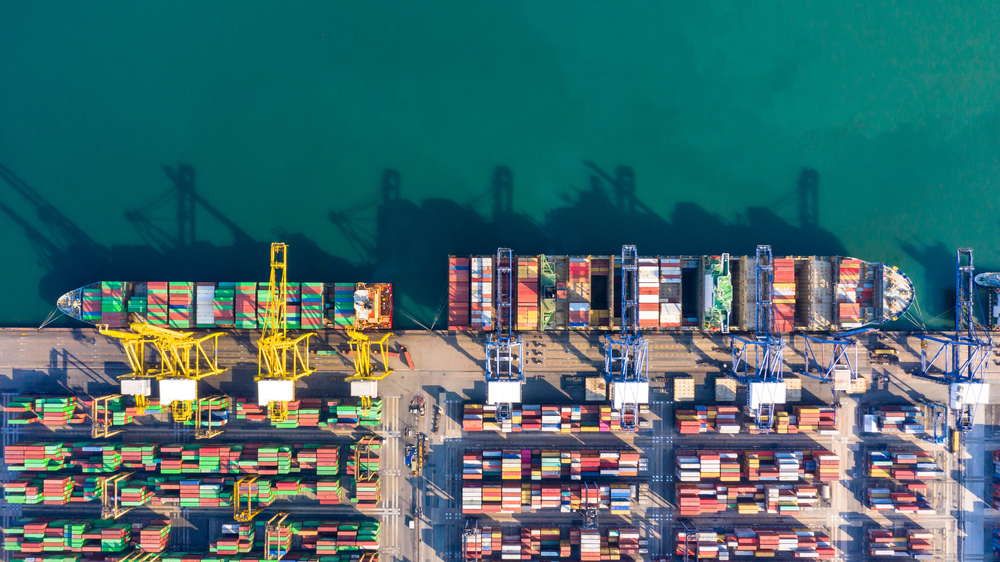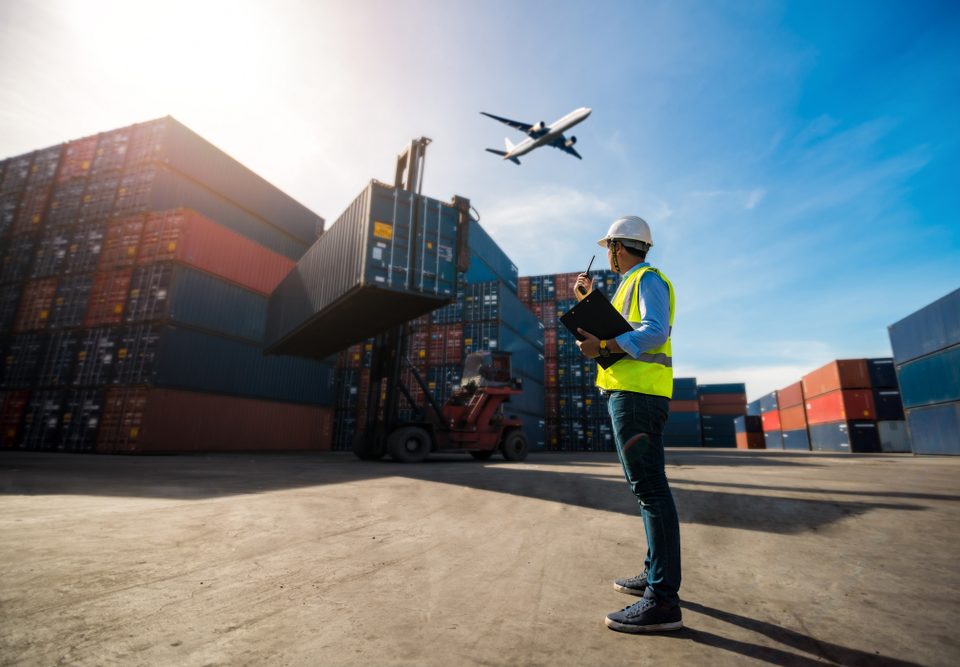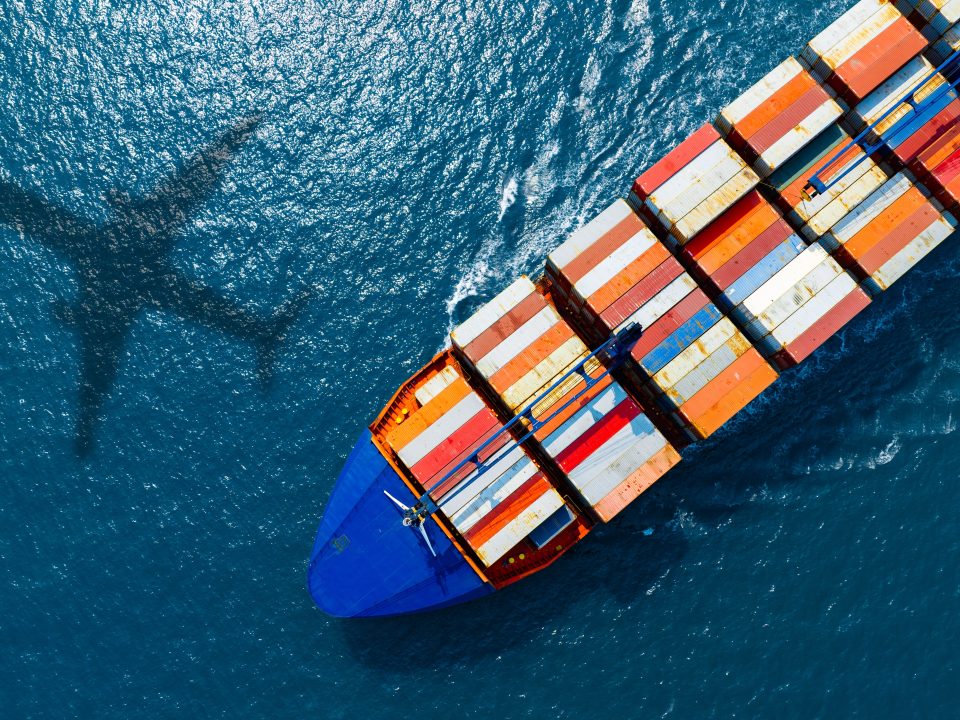
High Shipping Rates and Inflation Continue to Impact the Supply Chain
May 24, 2022
Goods Banned from Xinjiang, China Effective on June 21, 2022
June 2, 2022Weekly Vessels Anchored and at Terminals as of 5/25/2022
LA & LB: Anchored NIL (NM)* | Terminal 28 | Loitering 52 (NM)**
Oakland: Anchored 1 | Terminal 11 | Drifting/Loitering 5
NWSA: Anchored NIL | Terminal 7 | Drifting NIL
Vessel Congestion Update
On May 25, 2022, the Southern California Marine Exchange reported 80 total vessels in the twin ports of Los Angeles (LA) and Long Beach (LB). Of the vessels, 24 are container ships with 0 at anchor or loitering within 40 NM and 24 at berths. The LA Port Optimizer dated May 25, 2022, reports 52 container vessels are loitering/steaming toward the San Pedro Bay outside the 150 NM, which is down from the over 100 container vessels reported in January 2022. The average number of days container vessels are waiting at anchor for a berth is zero.
Note: Nautical Mile (NM) *Within 40 NM **Outside 150 NM
Cargo by the Numbers
This week represents the eighth week of Shanghai’s COVID-lockdown, which prompted carriers to increase blank sailings to one third of their transpacific destinations heading to the U.S. west coast ports, which may create a slight downturn in May import volumes.
The Port of Los Angeles expects cargo ladened vessels to arrive with less volume, down 5% from last year, with an estimated 20% downturn the following week. Container volumes at LA in April 2022 were down 6.2% from last year’s record for the month, while the Port of Long Beach posted a volume increase of 9.2% in April compared to the same month last year. While the Port of LA fell short of a monthly cargo record in April, it is still ahead of 2021’s banner output and moved 3.5 million TEU’s in the first four months of 2022.
According to Blue Alpha Capital April data, both Oakland and Seattle/Tacoma (NWSA) volumes were down, while the combined U.S. east coast ports experienced an import increase of 18.7% from their previous year. Savannah imports were up 11% and Charleston had a 34% increase.
The top ten U.S. ports overall experienced an import increase of 7.1% compared to the same month last year, suggesting cargo imports continue to climb yet a transition from west to east coast ports continues. Speculation of the port changes from west to east may be caused by the pending labor contract negotiations, on-dock dwell times, and/or the pending carbon emissions and clean air standards that may be a direct factor to shippers’ bottom line of passed on costs.
ILWU-West Coast Labor Negotiations
The ILWU (International Longshore and Warehouse Union) and PMA (Pacific Maritime Association) contract agreement had previously issued a joint statement that they would work daily until reaching an agreement but the ILWU indicated they were taking a temporary break from daily negotiations. The ILWU did not respond to a request for comment, and the PMA declined to comment as well.
Mario Cordero, Port of Long Beach Executive Director, as reported by Bloomberg, on May 23, 2022, stated in part, “He is confident the two parties know what is at stake and will resolve their differences within a reasonable time, but anticipates it will not be prior to July 1st, but a couple of months thereafter.” The current contract expires on July 1, 2022.
Gene Seroka, Executive Director of the Port of Los Angeles, earlier in the week stated in part, “There’s no need to worry right now adding that dockworkers are still going out in record numbers and will continue to do so.”
Peak Season Expectations
Both LA and LB ports are preparing for the peak season, which usually begins in July, ahead of the holiday seasonal imports, although this year it is likely to coincide with the increase in cargo arrivals that have been held back from the U.S. because of the lockdowns in China. Cordero stated, “It will have a domino effect, but they don’t know to what extent.” Seroka stated, “We are preparing for a likely summertime surge, as China recovers from an extended shutdown due to COVID 19.”
Carriers continue efforts to free up equipment and dock space by using sweeper ships to move thousands of empty containers off the terminals, and while dwell time on dock has improved, it remains at higher than acceptable levels. Pop-up yards for temporary storage of containers away from the marine terminals have been utilized; however, it is becoming more difficult to find additional near-dock locations which includes seeking inland locations away from the ports. The on-dock dwell time on terminals as of May 25, 2022, was down to 4.3 days.
Carriers are being encouraged to move more containers via on-dock rail and to book more inland point intermodal shipments. Rail dwell time is up to 6.3 days, which remains high, but it is less than the 11 days experienced in the past.
If you have questions regarding your shipping, please contact your Western Overseas representative.
Please note, Western Overseas will be closed on Monday in observance of Memorial Day.





